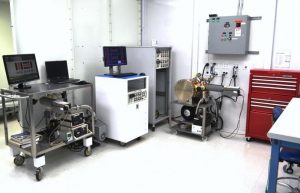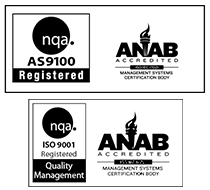RGA and the Cleanliness of Vacuum Components
Regardless of the industry, all companies strive to run a safe operation and minimize production downtime. Even the microscopic contamination of manufacturing equipment and parts can negatively affect their performance in their integrated assemblies. Dirty equipment is less reliable and more prone to wear and breakdown.
Outgassing of materials and the generation of particles can have a significant effect on assembly. Material outgassing is of particular concern in applications where vapors can affect performance. Material selection and appropriate cleaning processes are an essential part of managing outgassing.
Understanding Residual Gas Analysis
Residual Gas Analysis is an analytical technique used for identifying gasses in a vacuum environment. During the process, a Residual Gas Analyzer (RGA) creates a beam of ions from the sample of gas being analyzed. These ions are separated into individual species based on their charge-to-mass ratios. The three main parts of an RGA are the ionizer, the mass analyzer and the ion detector.
Residual Gas Analyzers Detect and Quantify Contaminants
RGAs are used to monitor the quality of a vacuum and to detect minute traces of impurities in a low-pressure environment. A residual gas analyzer is specially designed to be used in either a laboratory or on the shop floor. They are primarily used for process control and contamination monitoring in vacuum systems. Gas analyzers can distinguish leaks from outgassing, detect helium, fingerprint the process background and determine the effectiveness of gas line purging.
Outgassing is the detachment of volatile molecules which can be absorbed or adsorbed on the surface or in the volume of a material. Outgassing prohibits fast achievement of low pressure valves and outgassing materials can deposit on surfaces, causing them damage.
Vacuum Cleanliness
Vacuum applications are becoming more important due to the large number of technologies that can only be applied in vacuum environments. The purpose of a vacuum is to remove molecules that could interfere with a process or equipment. In order to achieve optimal vacuum performance, vacuum vessels and components must be kept clean. An RGA helps achieve stringent levels of cleanliness while efficiently characterizing and quantifying micro-contaminants.
